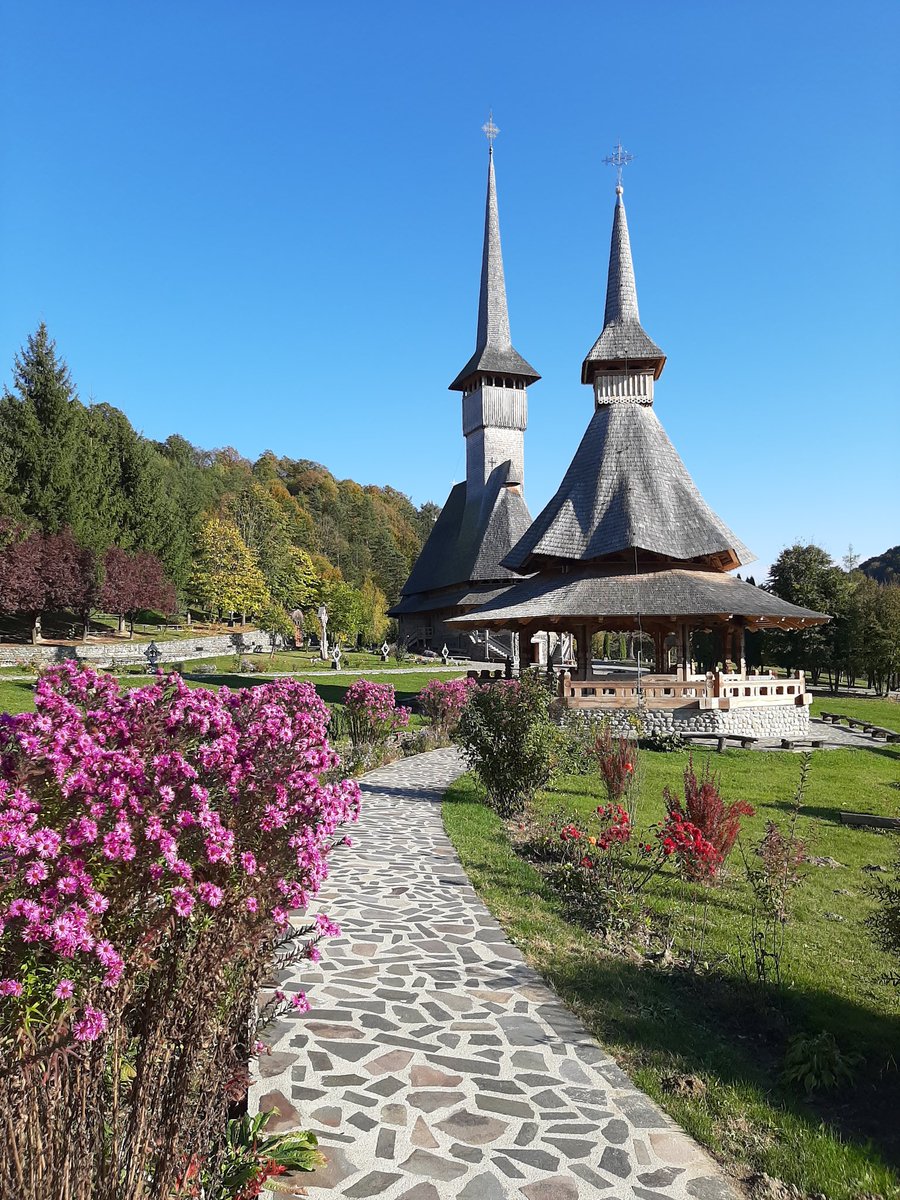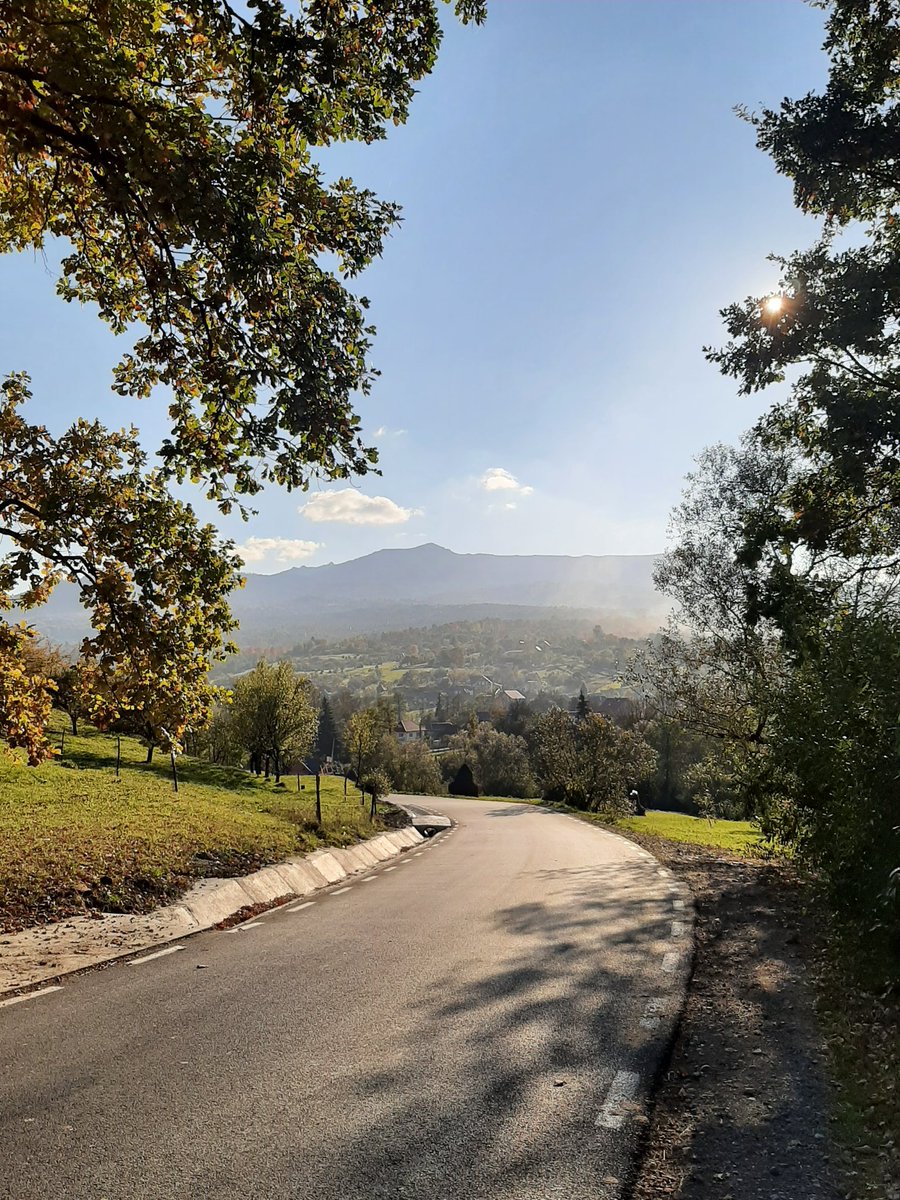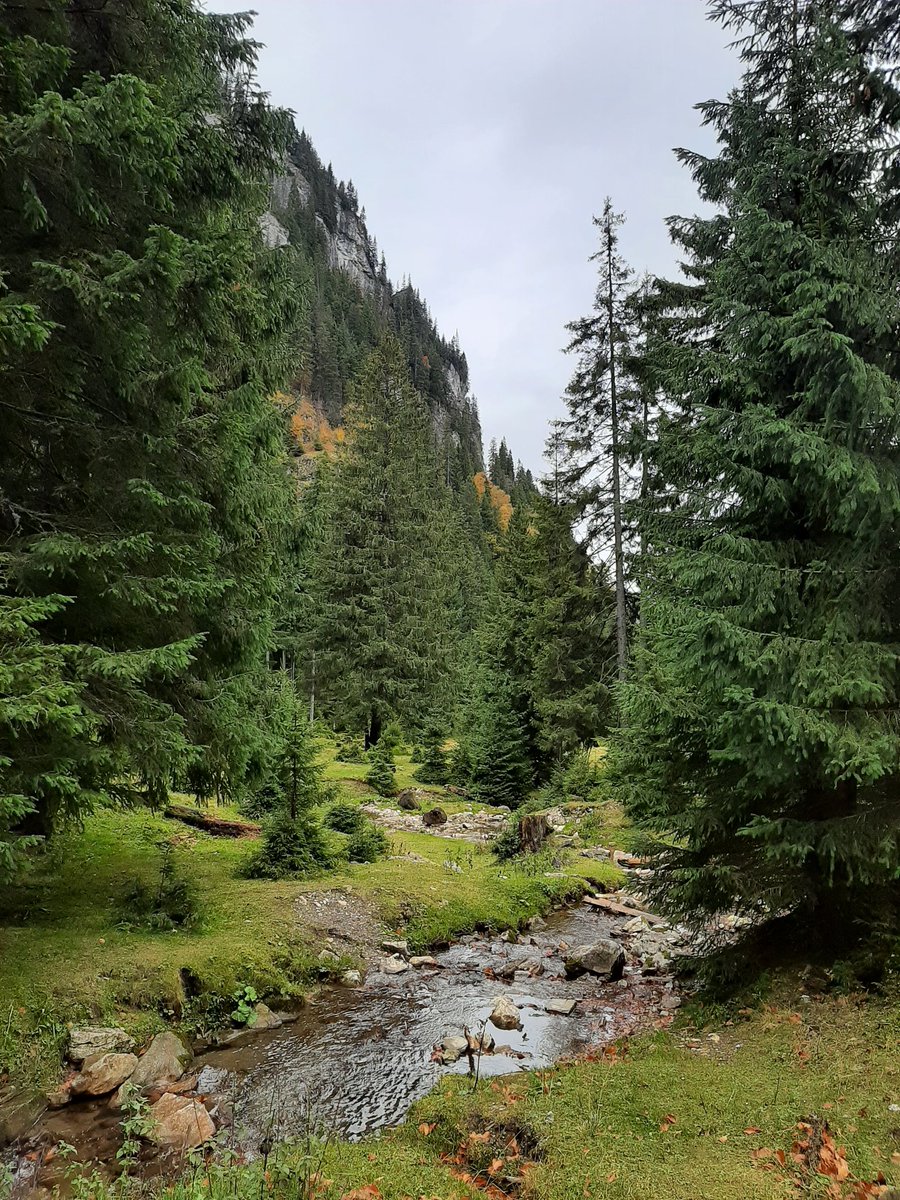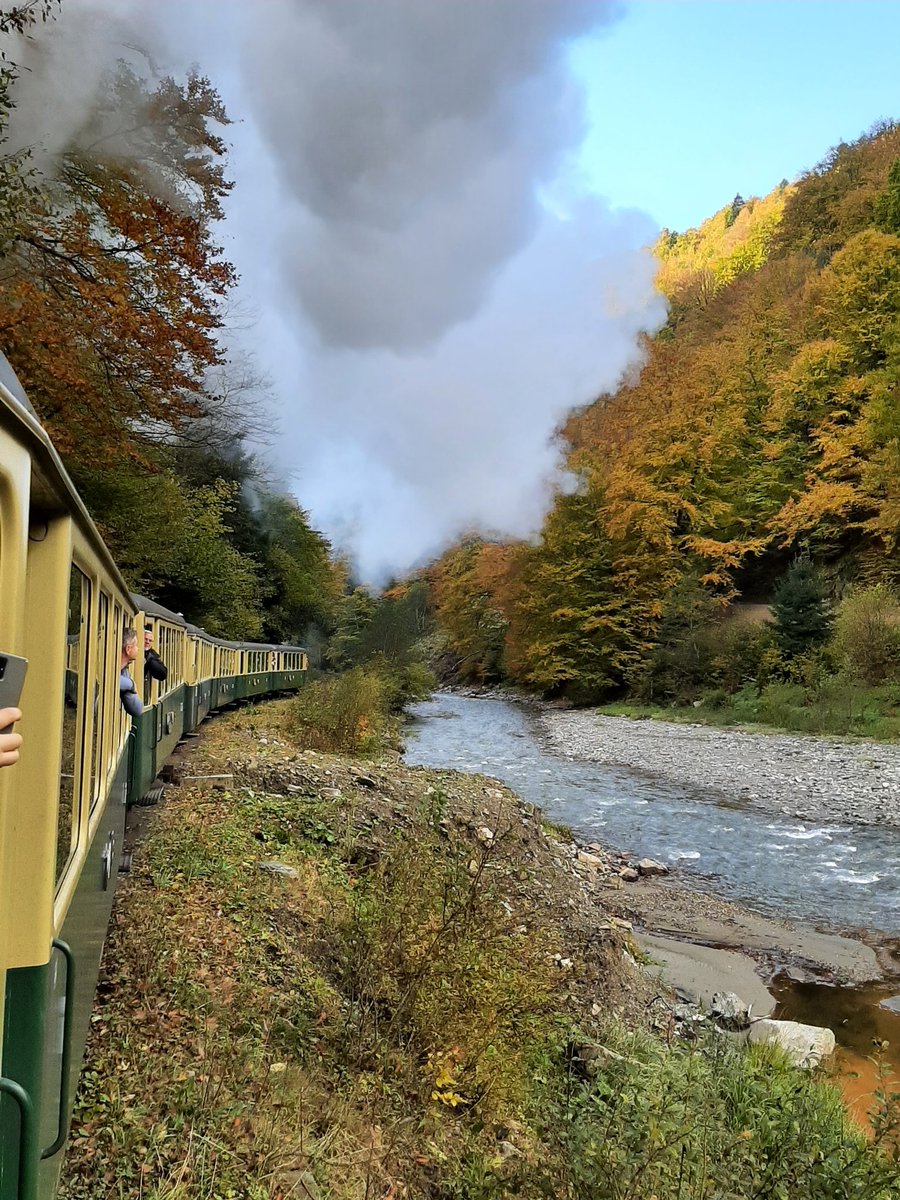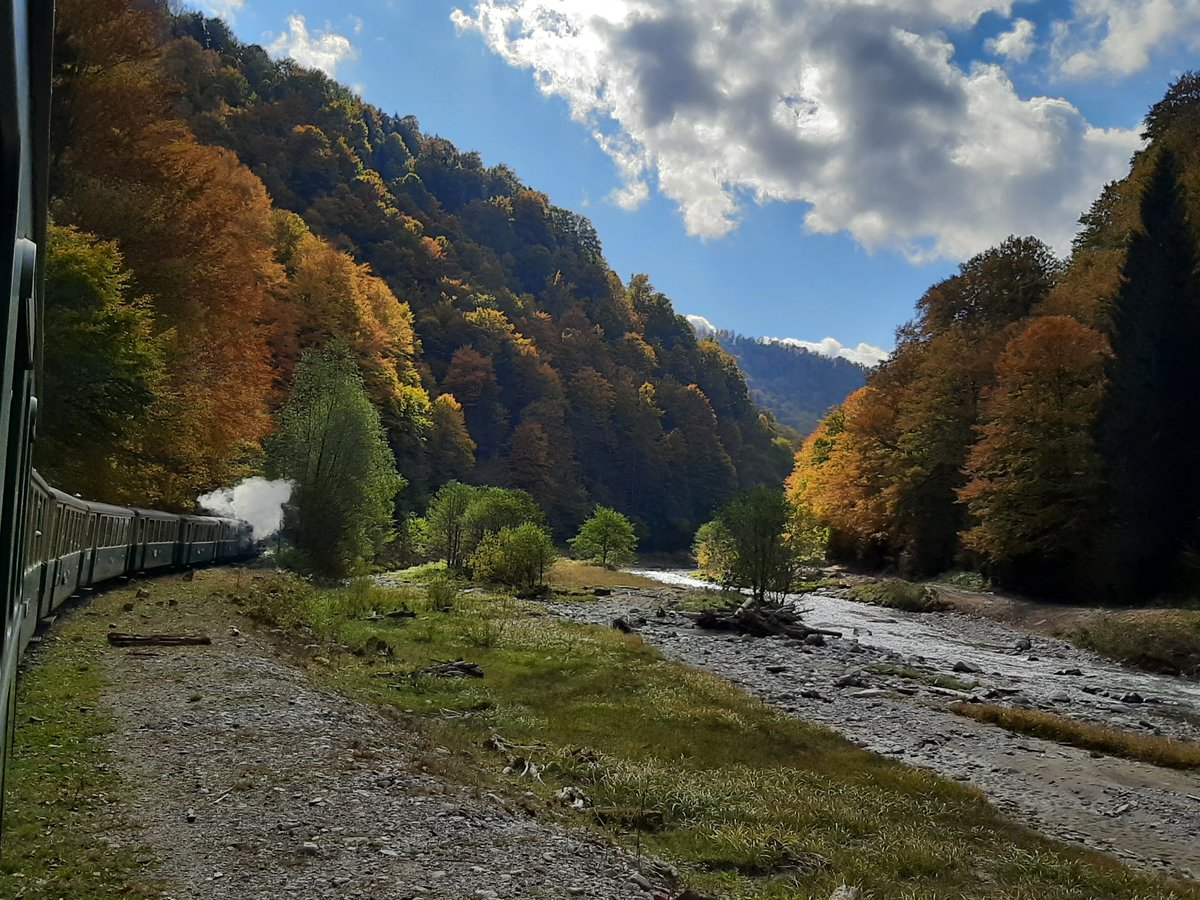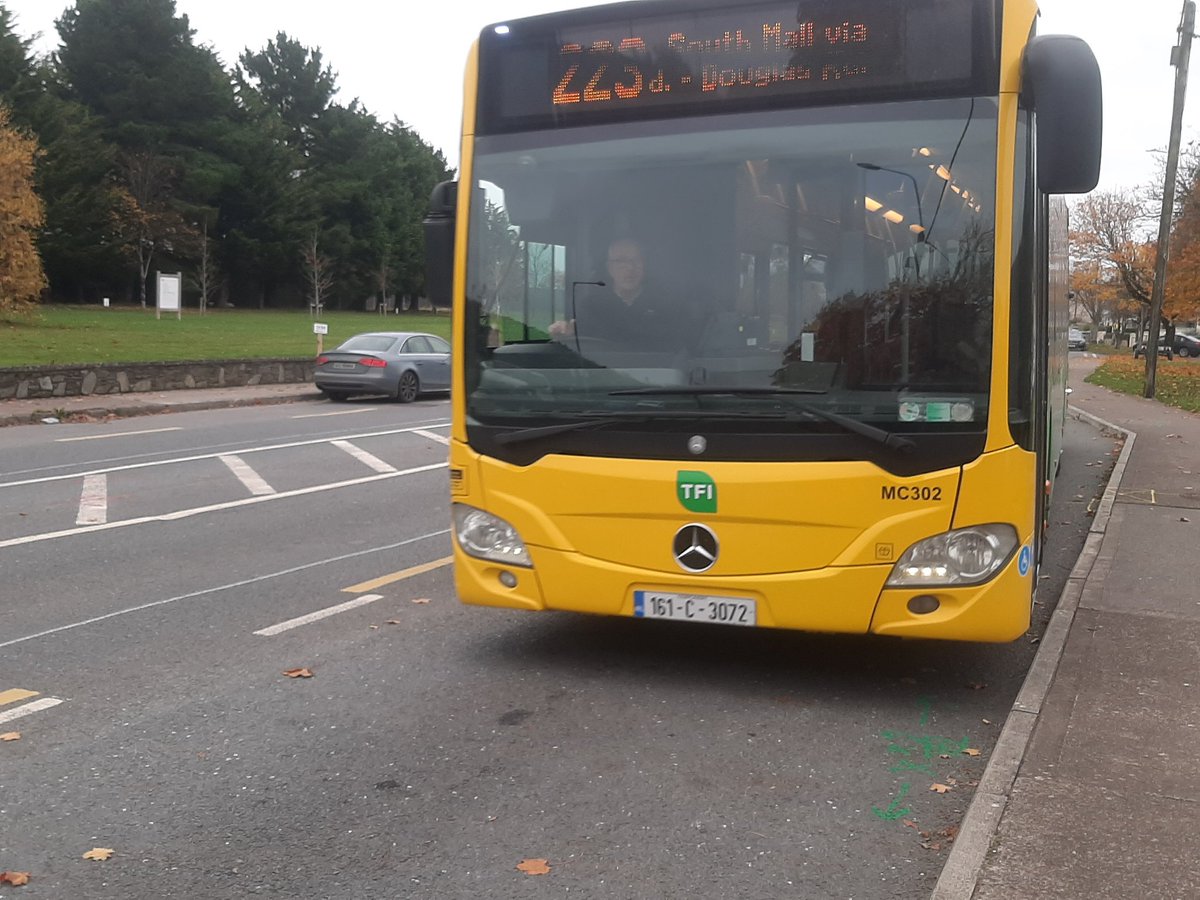I've been on the Satu Mare night train as recently as last July. If you didn't follow along for the ride back then and are curious about this train, the scenery on the route and the sights of the cities of Carei & Satu Mare, check out the thread below.
https://twitter.com/PaliparanDotCom/status/1417511455742627848
Goodmorning from somewhere near Satu Mare. Bit foggy this morning, but when the mists will clear away it promises to be a lovely day up north. 







At Satu Mare, it's a switch of transport from train to rental car. Road trip time! It's peak autumn in northern Romania and fabulous weather. 




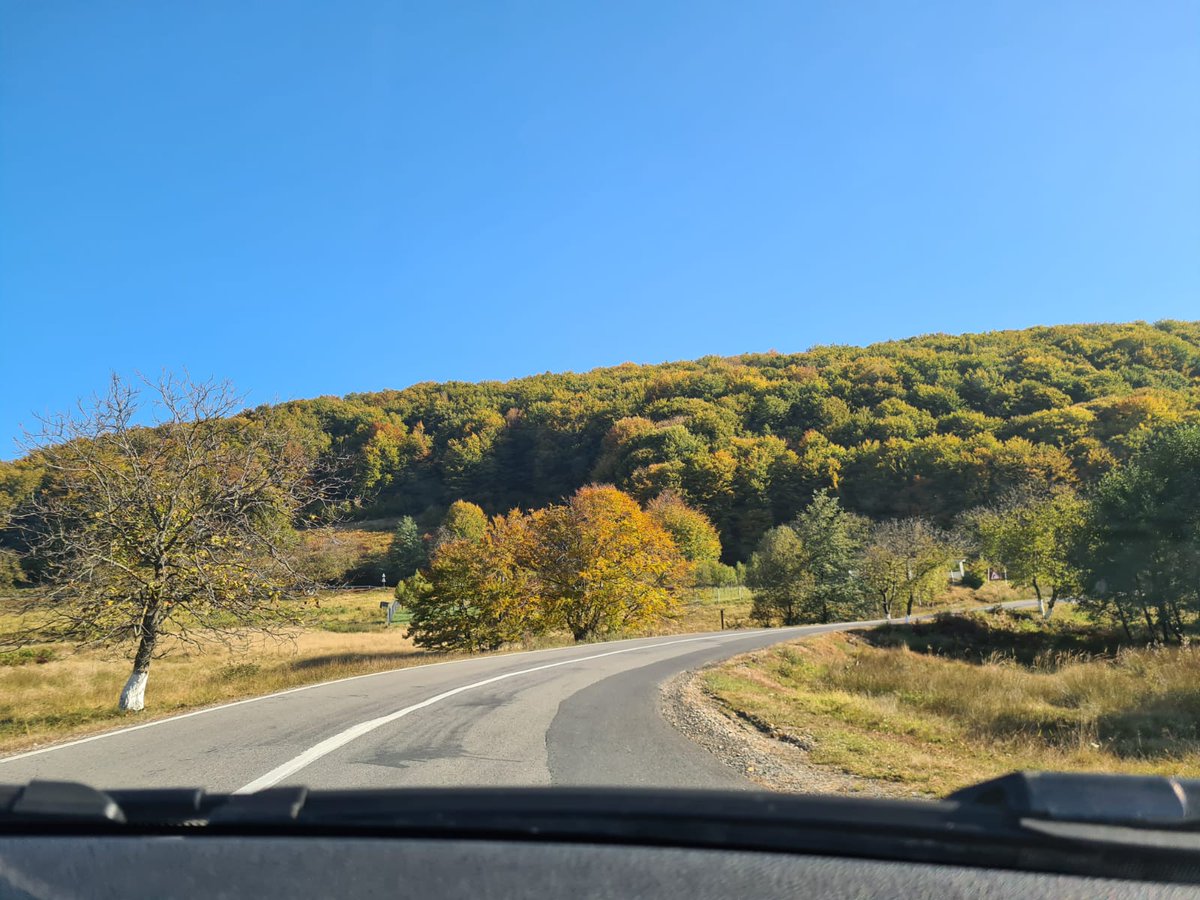


The pics & texts on the graves, all merry rhyme verses, depict the life of the deceased, most often tru their professions. Eg pic 1 is a doctor, pic 2 a forest ranger and factory worker, pic 3 a lumberjack. On pic 4 you see a girl who sadly died aged 3 when she was hit by a car. 







From Săpânta the drive continues deeper into Maramureş to Sighetu Marmației, a relatively large market town and regional hub right on the Ukrainian border. 







It's a pleasant market town w quite a lot of activity going on. Local kids all go to high school here, there are lots of shops & businesses.. Sighetu Marmației (just called Sighet by the locals) was also the birthplace of Eli Wiesel - in the 1920s about half the town was Jewish. 







Sighet is also famous in Romania as the home of the most notorious of all communist prisons. The Memorial to the Victims of Communism is well-worth a visit to learn more about the prison. One of the people killed here was former Romanian PM Iuliu Maniu (his cell is on pic 2). 







Thanks to corona, almost all cafés and restaurants in Sighetu Marmatiei are closed/takeaway only. Some mici (grilled ground meat rolls) from the Kaufland supermarket grill it is then for a quick roadside stop before we drive on to Bârsana through stunning autumn landscapes. 







Just outside of Bârsana you can find another - much older - wooden church. Lovely frescoes inside. Intact on one side, disappearing on the other side because of the elements/sun. 



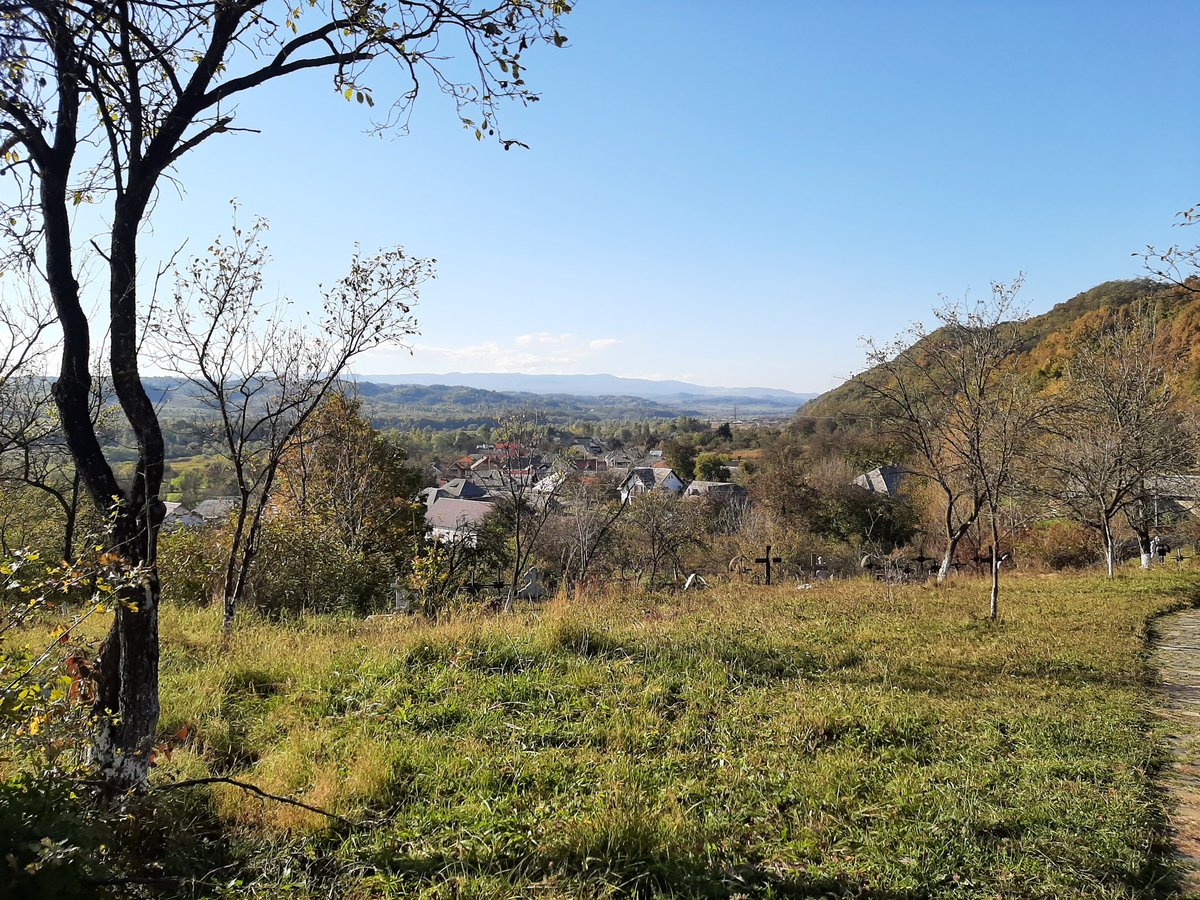



Ştefan is the caretaker of the church and a great guy to have a chat with. He had previously worked in Bucharest from the 60s to the 80s as a construction worker, working among others on the highrise Intercontinental Hotel and Ceauşescu's madcap People's Palace! 





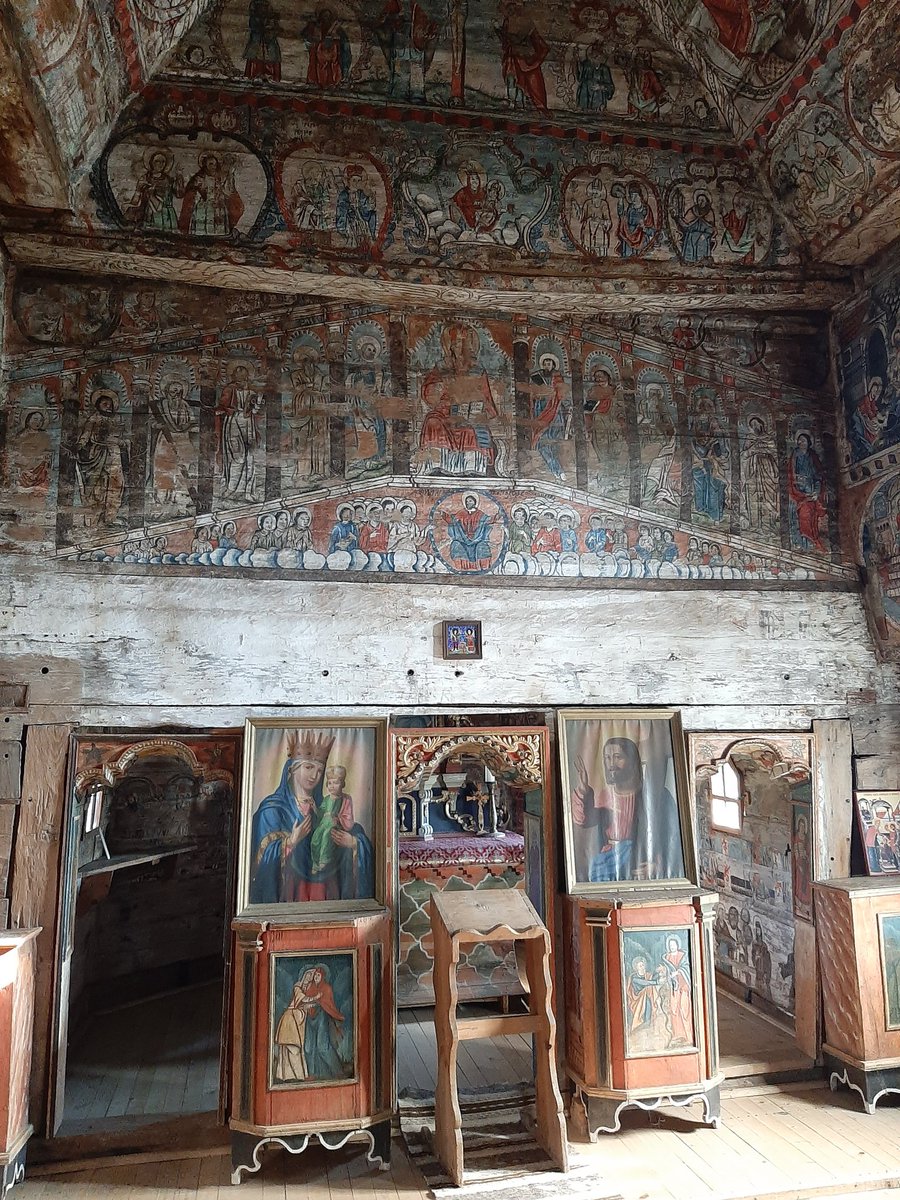

From Bârsana the road trip continues to the small village of Breb. The roads in Maramureş are in a surprisingly fabulous condition - far better than half of Transylvania despite Maramureş being more traditional/rural for most. 



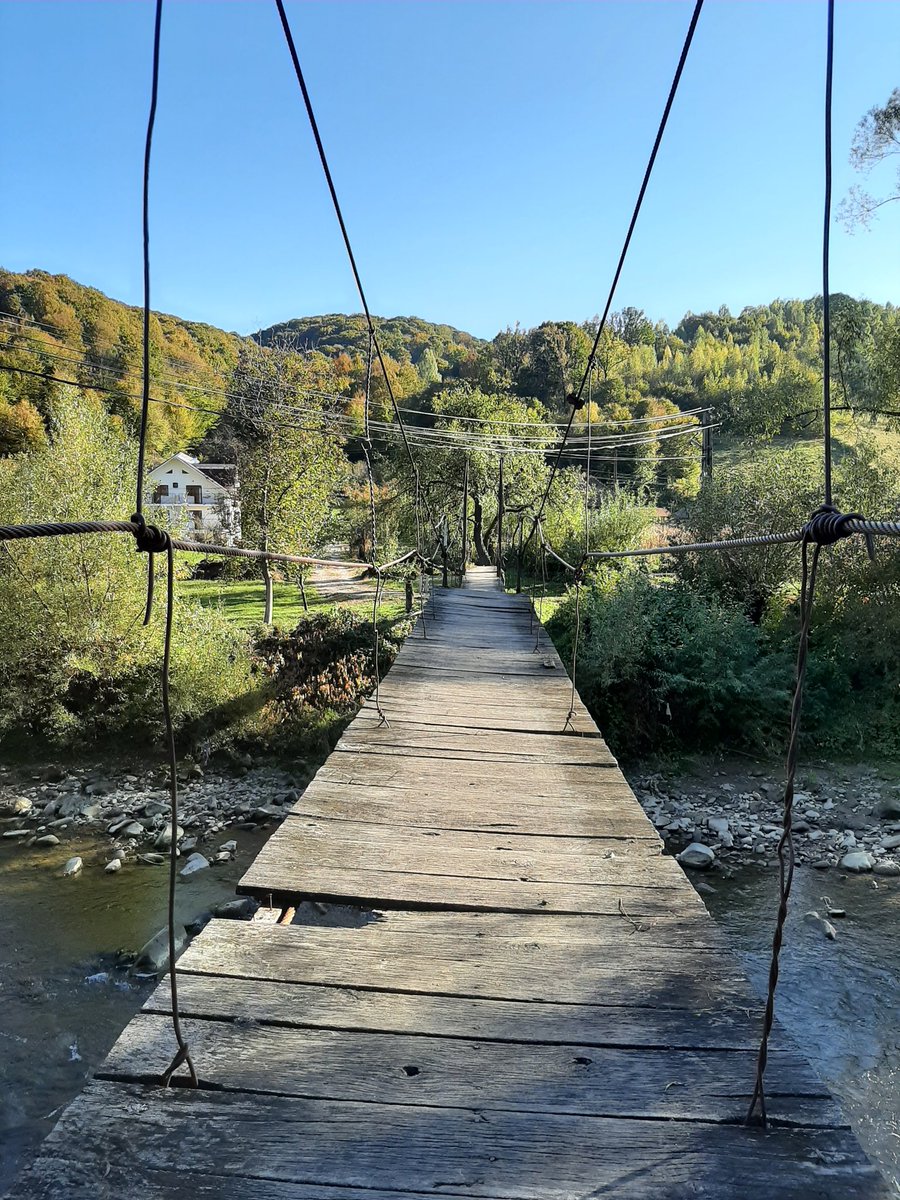



Here in Breb is my accommodation for tonight, a wonderful traditional wooden house with proper Maramureş style interior design as well. A small bottle of palinka (homemade, of course) is waiting on the table as welcome drink. 







Being a small village house, the accommodation also comes with its share of community animals wandering around the premises. In this case, two super cute dogs and a cat. 






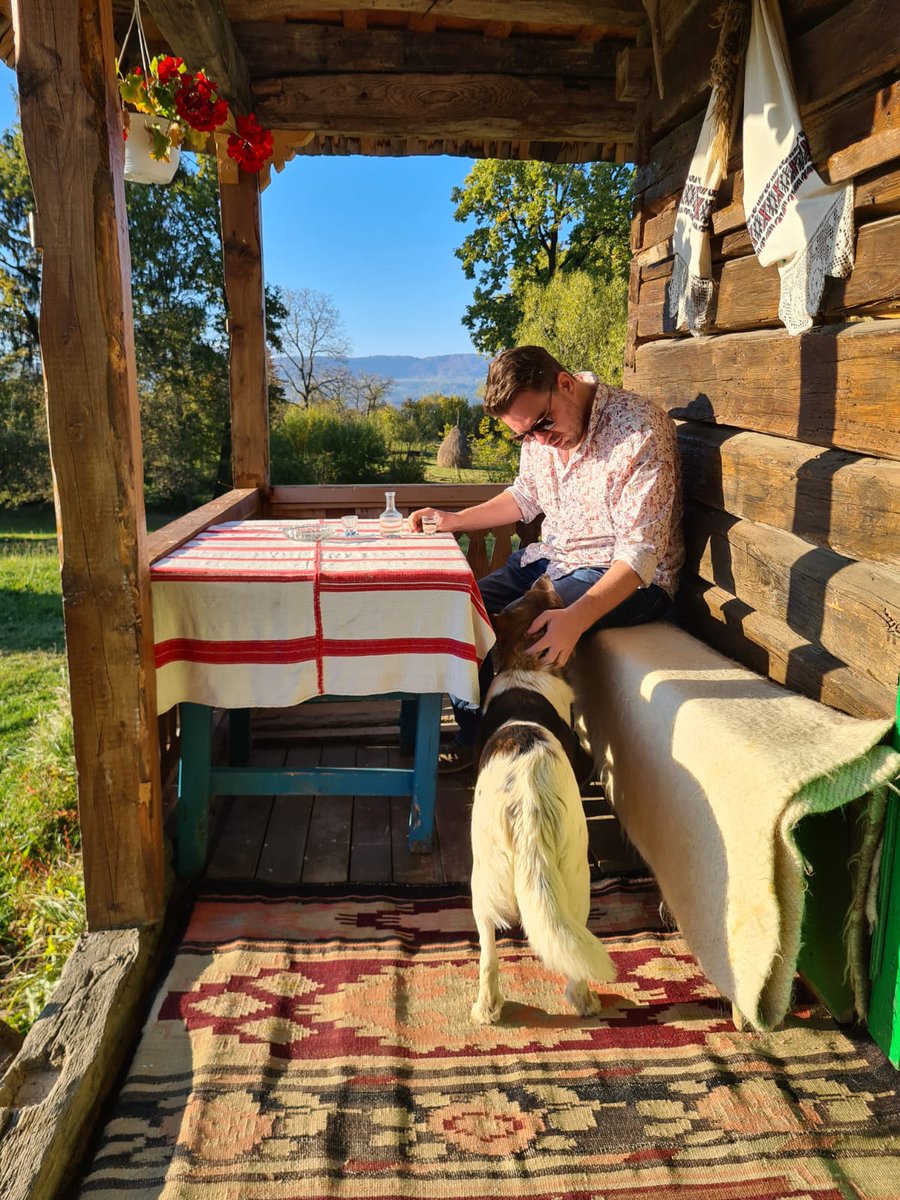
So let's have a walk around Breb! Fun thing: the dogs are following us all across town! Feeling like a proper local going for a walk with the dogs walking ahead or shortly behind wherever you go. 







These wooden gates such as on picture 2 are typical for Maramureş. They are all hand carved, and making a new one could easily cost several 10.000s of euros, esp. if you want one with fine details! 







Breb is just a really cool village to play a bit with the local animals (like the cat on pic 1 who decided that my shoulder apparently is a nice place to chill) or to simply wander around to places like the local church and its rudimentary graveyard. 






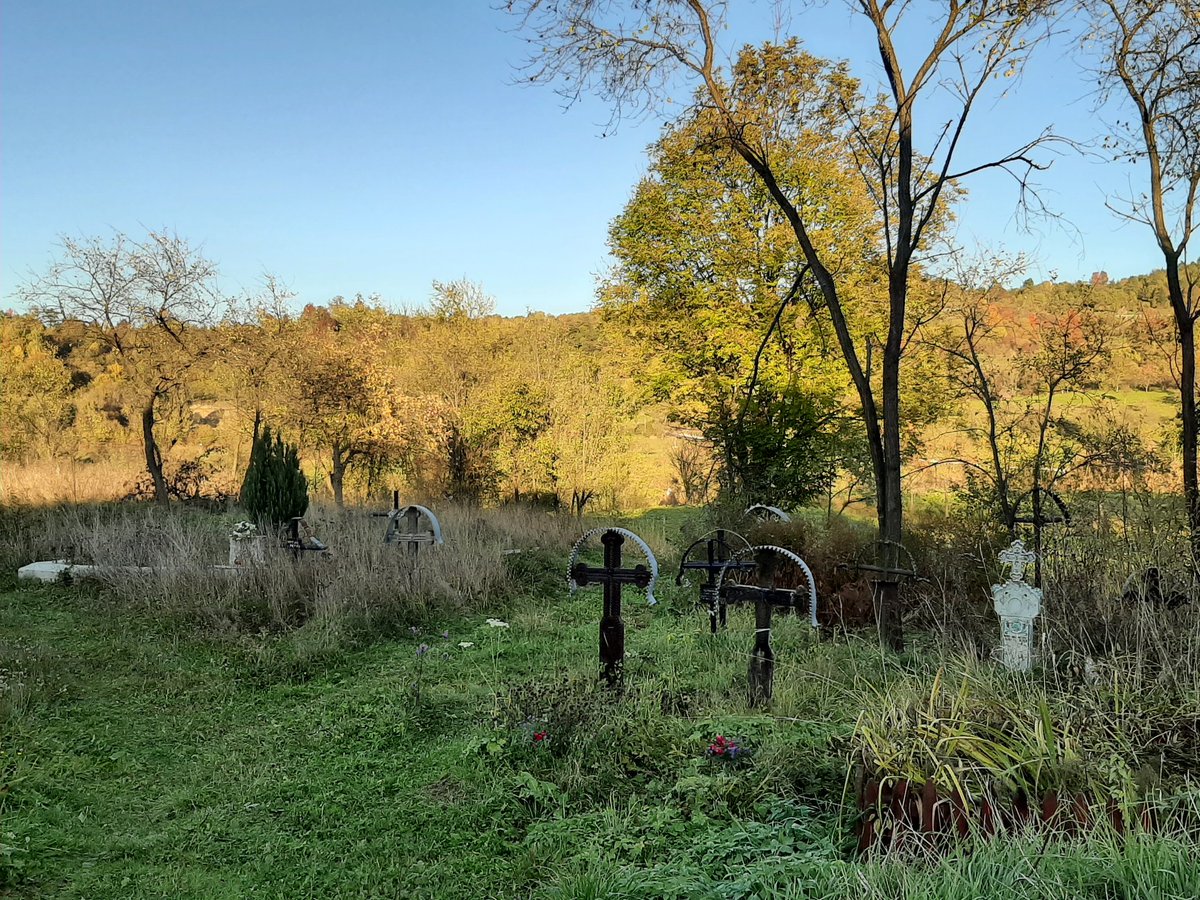
Breb is also famous from the book 'Along the Enchanted Way' by William Blacker, which is partly set in this village. It's a great read which details the author's exploits in Romania of the early 1990s just after the fall of communism. Highly recommended!
amazon.com/Along-Enchante…



amazon.com/Along-Enchante…



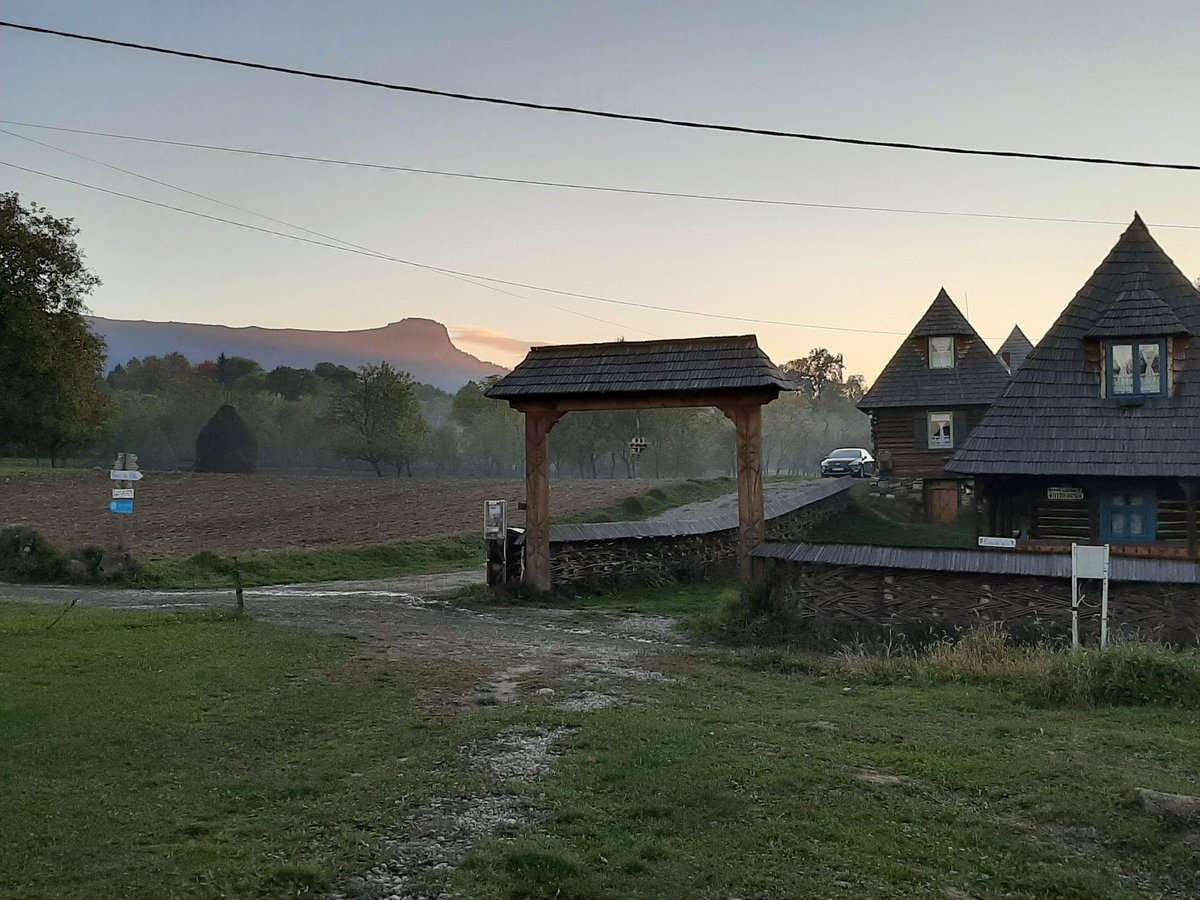
Watching the sunset from the porch of the house with a decent beer.. I can certainly get used to village life like this! 







And a traditional homecooked dinner at the only restaurant in the village, Casa Dochia. No menu, just 2 daily dishes only, with food like you would get when staying with a local family. Smoked peas and pork soup, cabbage with pork as main, 'salam de biscuiți' as dessert. Yum! 







When I opened the door of the house having returned from the restaurant, the community cat immediately ran inside looking for some warmth and cuddles. Sweetheart. Goodnight all! 







Goodmorning from Breb, where the animals are already waiting outside the house and some of the village women head out to milk the cows. 







Even though it's a but foggy and cloudy today we'll hit the road again to explore more of Maramureş. 





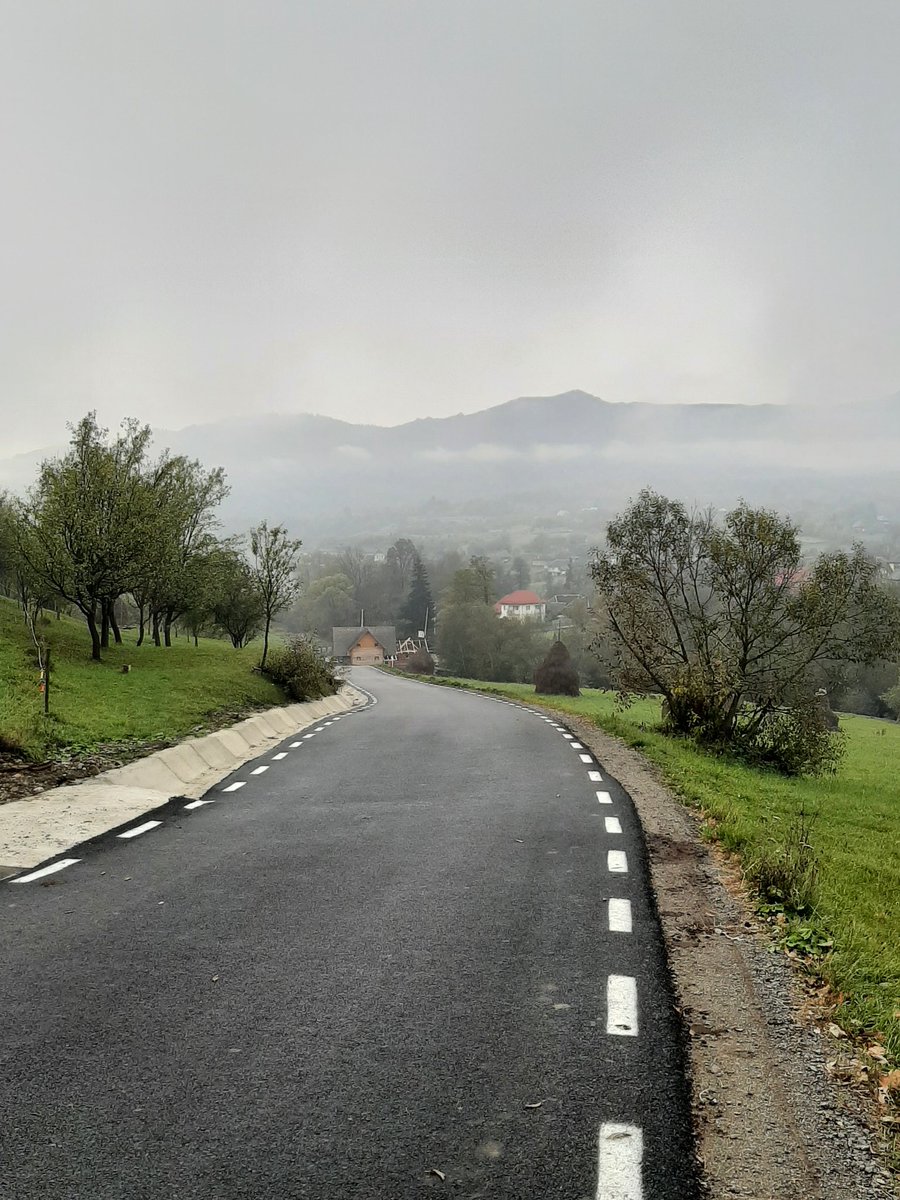

First stop today: Ieud, which has two wooden churches. This one in the valley, and another one on the hill. Historically Ieud was an important town with powerful regional rulers (voievods). Here, also some of the earliest Romanian language manuscripts have been found (1364 AD). 





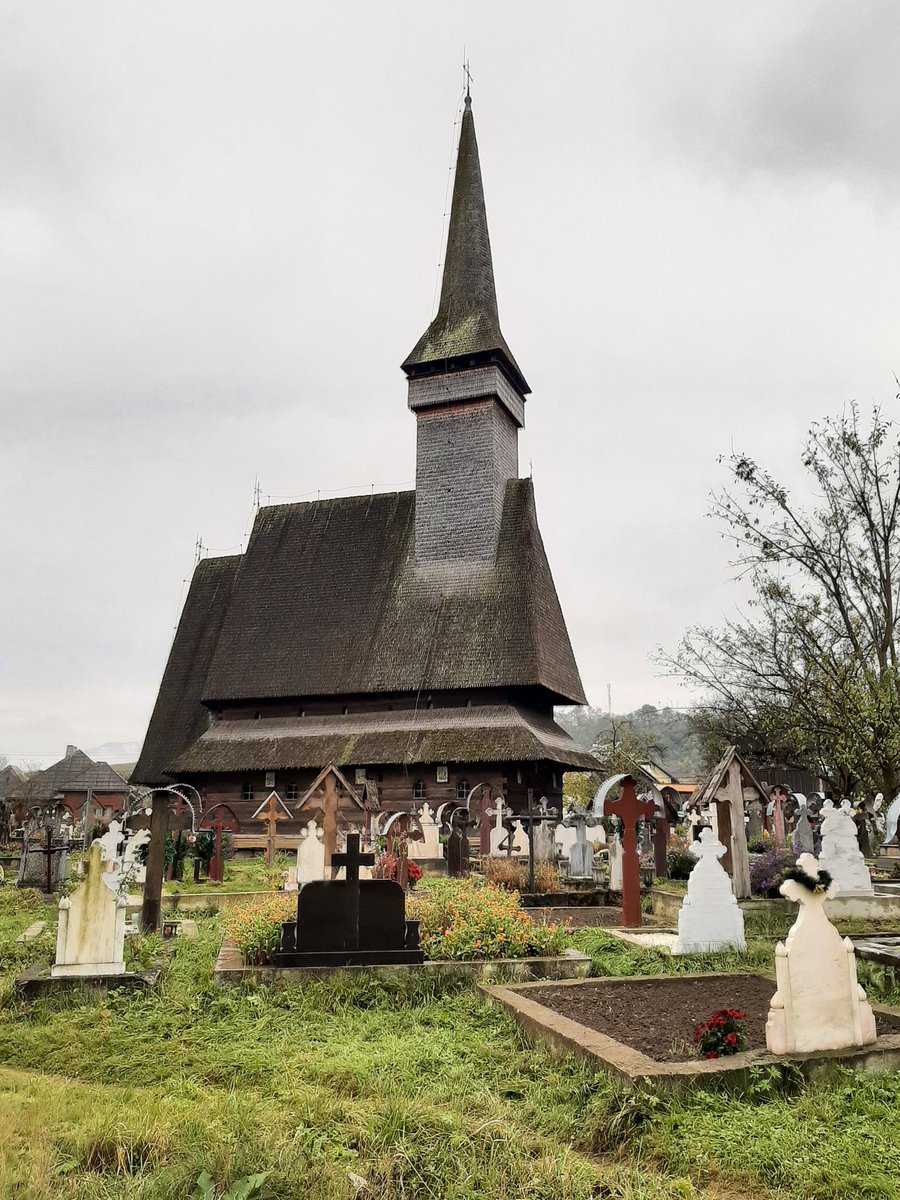

The hilltop church in Ieud. Together with a few other wooden churches across Maramureş, they are inscribed on the UNESCO World Heritage List. 






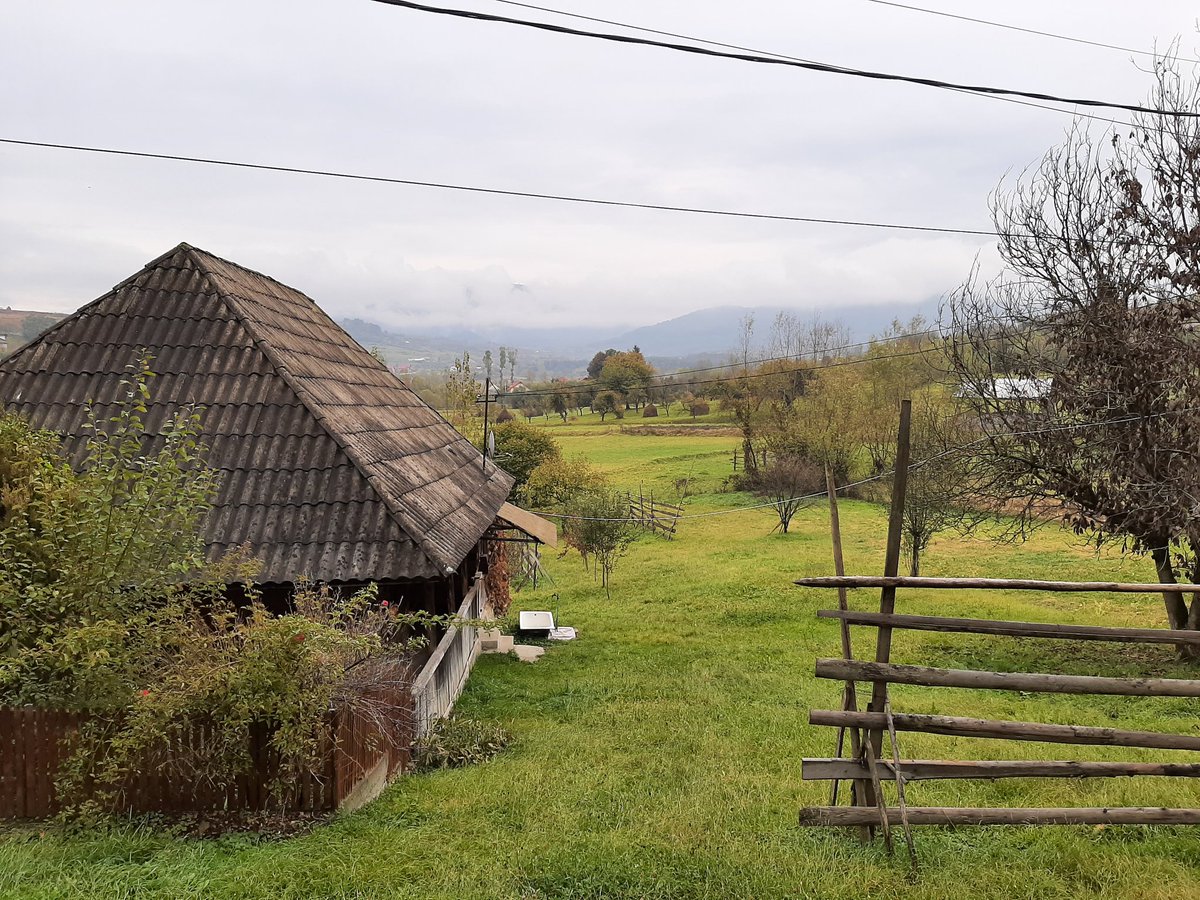
From Ieud, the Maramureş road trip continues to Borşa, a town well-known regionally for wintersports and some great hiking in the Munţii Rodnei National Park. And a great hike is exactly what's planned for the afternoon. Up by chairlift, down on foot. 







The upper station of the chairlift is at an altitude of 1,380 metres above sea level. Great views - but trust me, they will only get better! 







From the upper chairlift station you can either hike further up to the Ştiol mountain lake or down to Cascada Cailor (Horses' Waterfall) & back down into the valley. As there aren't enough daylight hours left it will be only the latter this time. The autumn colours are gorgeous. 







The first waterfall you pass by (pic 1) is another one and not Cascada Cailor. After this first waterfall, you will have to walk a bit further through the pine forest to get the first glimpse of Cascada Cailor (pic 4). At 90m high, this tiered waterfall is Romania's highest. 







The views and the autumn colours in the forests are just fantastic on this hike, and they keep on getting better as you walk further down as pine trees slowly give way to deciduous forests. 







At a particularly beautiful stretch, a stray dog suddenly decided to become friends. The good boy ended up walking along for multiple kilometres all the way until the car park! 




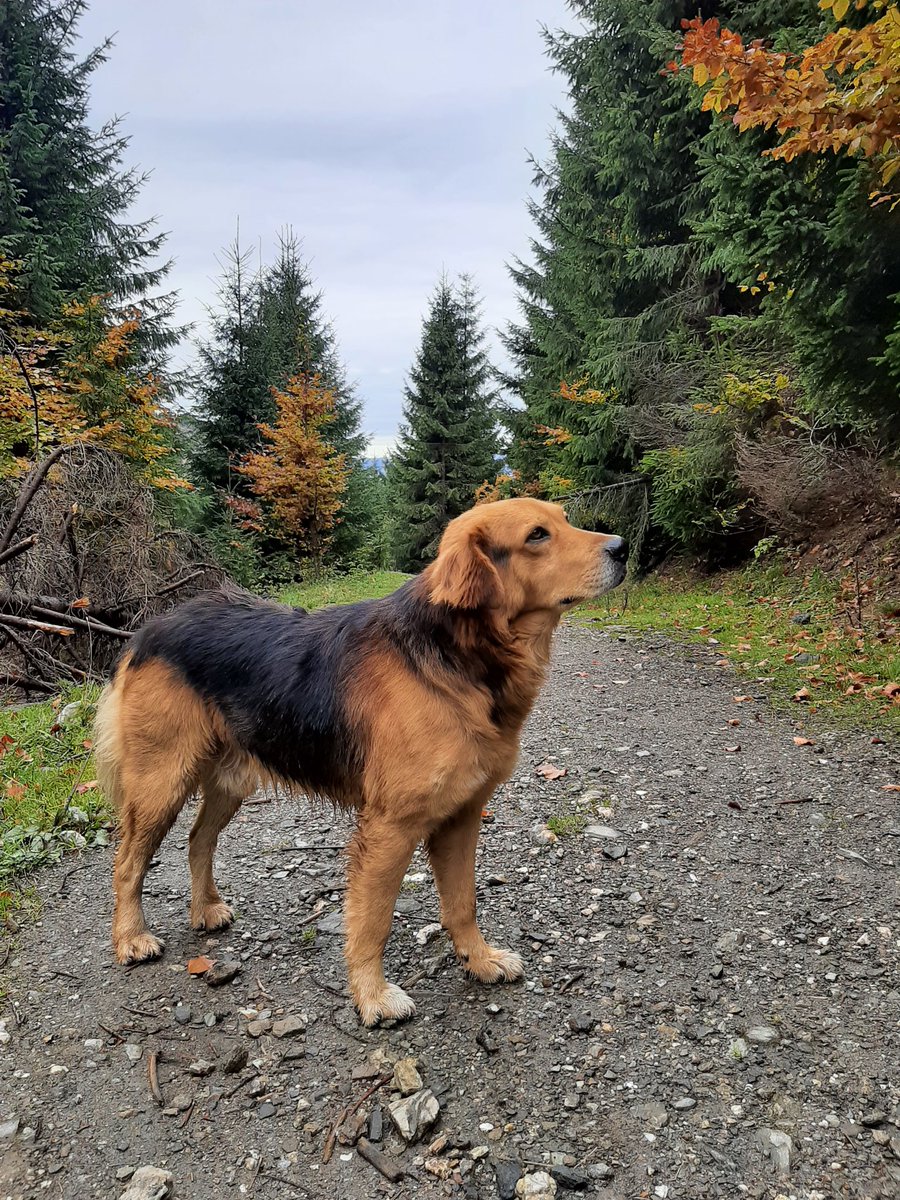


The last part of the hike is perhaps the best when it comes to the scenery. The autumn foliage here is just drop dead gorgeous, as is the view over the rolling hills and mountains of Maramureş. Who needs New England when you got Romanian autumn colours! 







The dog is still with me as we walk through a small village in the valley. As you can see on the fourth picture, horse-drawn carriages are still a common sight on such Maramureş roads (and even on provincial roads sometimes). 







When the dog doesn't lead the way but walks behind to explore a driveway or garden for a while, he quickly runs back to catch up. At this point the cute stray dog is with me for some 2 hours.. 







And the dog eventually walked all the way along until the chairlift car park, where sadly enough I had to leave him behind.. sad moment, as also a cute stray cat suddenly came vying for attention together with the dog. If only I had a countryside house with a yard... 



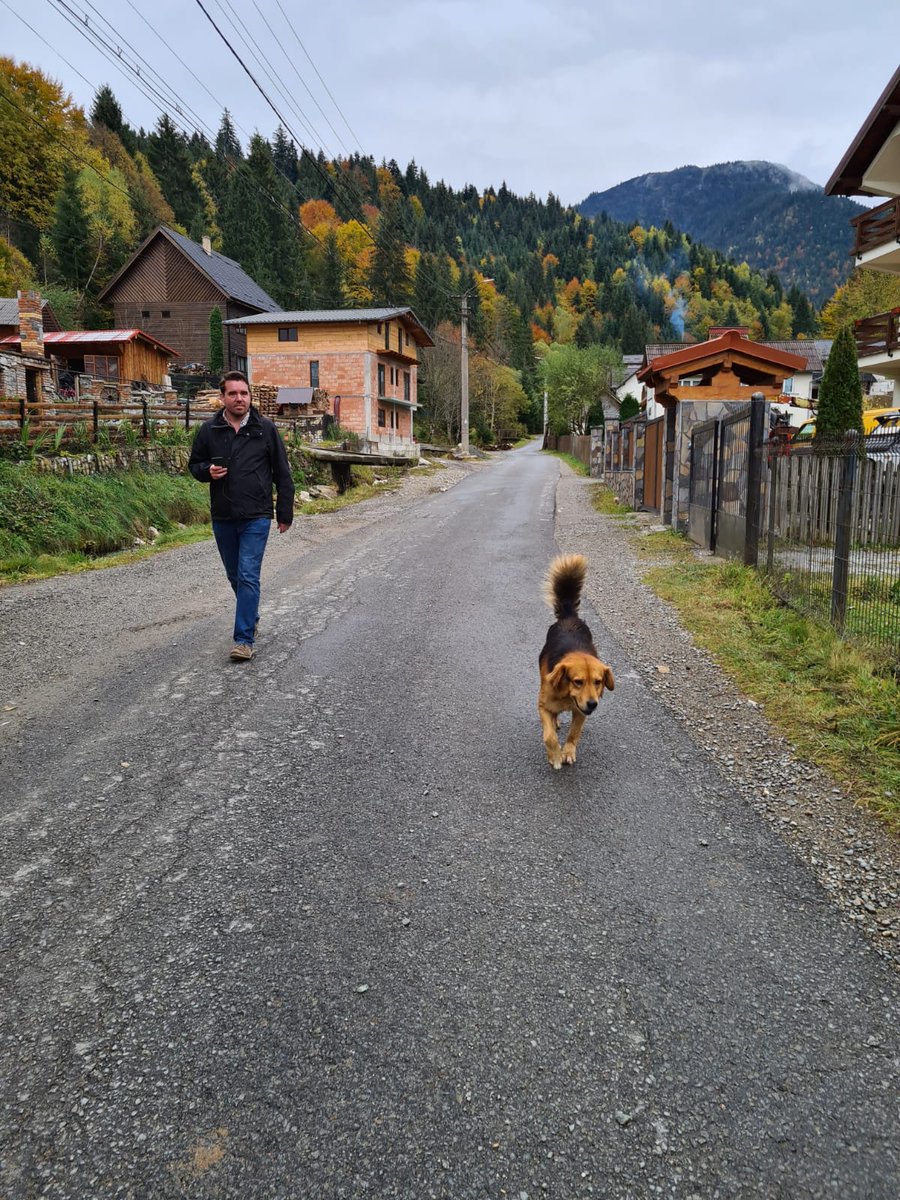



From Borşa it's not too far to Vişeu de Sus, one of the bigger towns in this rural area of Romania. The family-run La Cassa hotel and restaurant is a favourite of mine, good rooms and an even better restaurant. It will be my home for the next two nights. 







The town itself isn't much special, but it is the location of one of Maramureş main attractions - which I will visit tomorrow. 







After the walk through Vişeu de Sus it's back to La Cassa for a great dinner. Complimentary appetiser/palinka (plum brandy), some jumări (pork cracklings), a great potato and smoked sausage soup, plus some mămăligă (polenta) from the oven with sheep's cheese, sour cream, sausage. 







Goodmorning from the railway yards of the Mocaniţa in Vişeu de Sus, the last of the narrow-gauge forestry railways in the Carpathians which is still fully functional in its original purpose of transporting lumberjacks and goods from the town deep into the forest and back. 







They also run tourist trains on the highly scenic railway through the valley of the River Vaser, daily in summer but less frequent in other seasons (this autumn only two morning train departures each on Saturday and Sunday). Our steam locomotive is attached and we are off! 



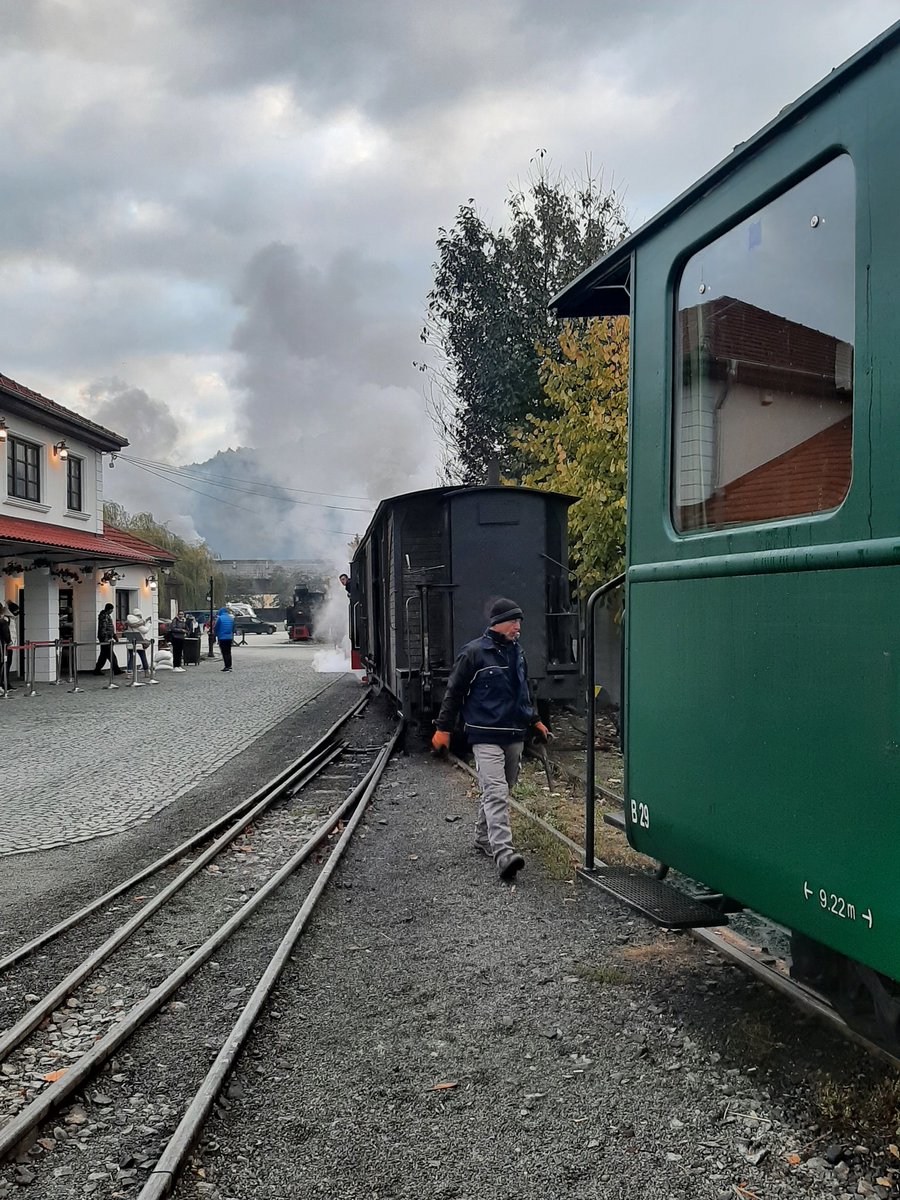



Stop at one of the lumber yards before we head out of town deeper into the Vaser Valley. I'm in the front wagon. All carriage types have fully opening windows, but this one also has small outdoor viewing platforms at the front & back. Watch the dog follow the train on departure!
The first part of the journey is along a dirt road through the outskirts of Vişeu de Sus. At times, the houses are just a few feet away from the track! 







Under a cloud of smoke we leave the town behind and head deeper into the Vaser Valley. As the autumn colours are superb and the morning clouds are slowly clearing away it promises to be a great day trundling along the narrow-gauge tracks.
Let's check out the small platform at the back of my carriage. As the track is rickety, you need to be a bit careful when hanging over the railing but it's great fun standing here in the open air. Note: your face might get a bit black from the sooth particles of the steam engine! 



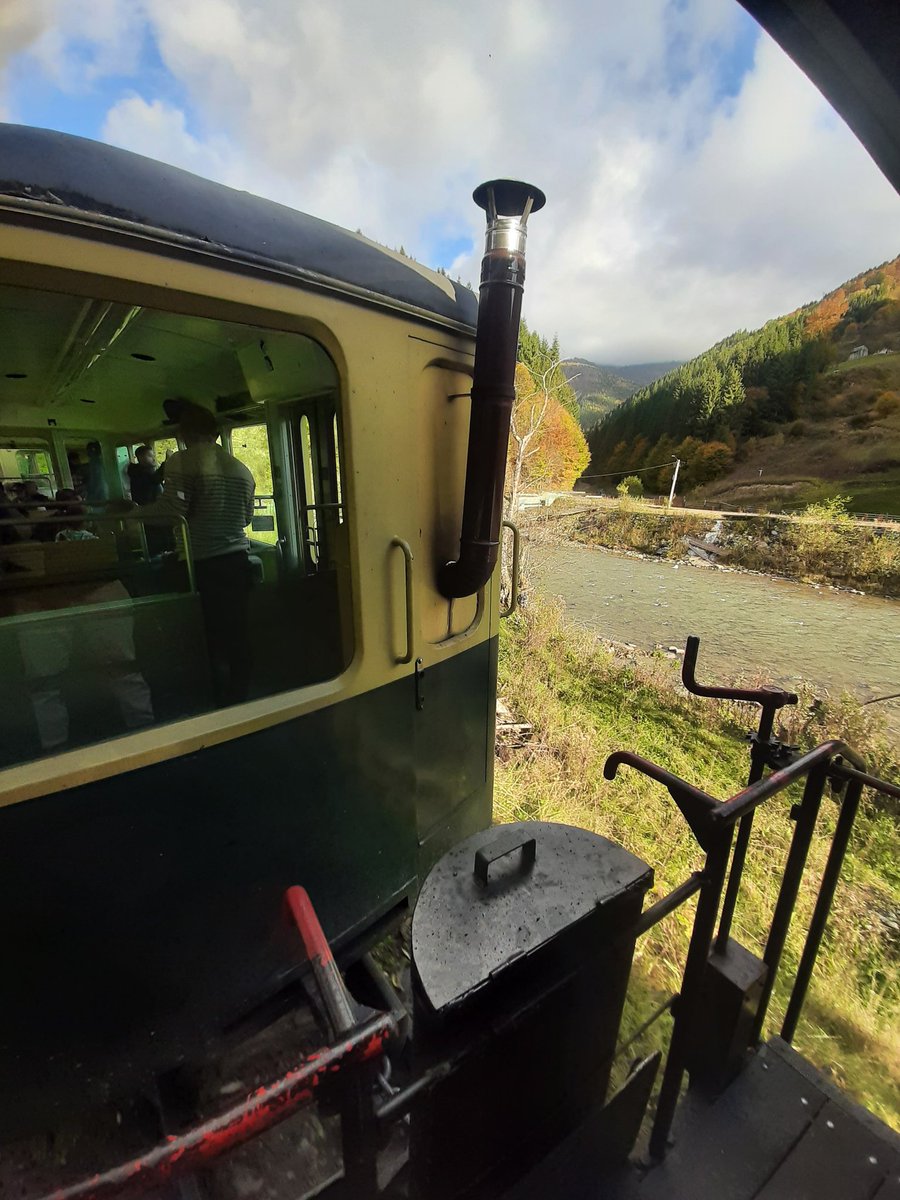



Approaching the midway point of the railway line. The scenery is getting better and better as we head deeper into the valley, with the forests becoming more dense and the terrain more mountainous.
20-minute stop at the midway point of the railway line, a scenic picnic area underneath a craggy rock right alongside the river. 







The stop is a good opportunity to take a closer look at the steam locomotive of our train, built in the 1950s at the Reşița Works in the town of the same name in south-western Romania. 






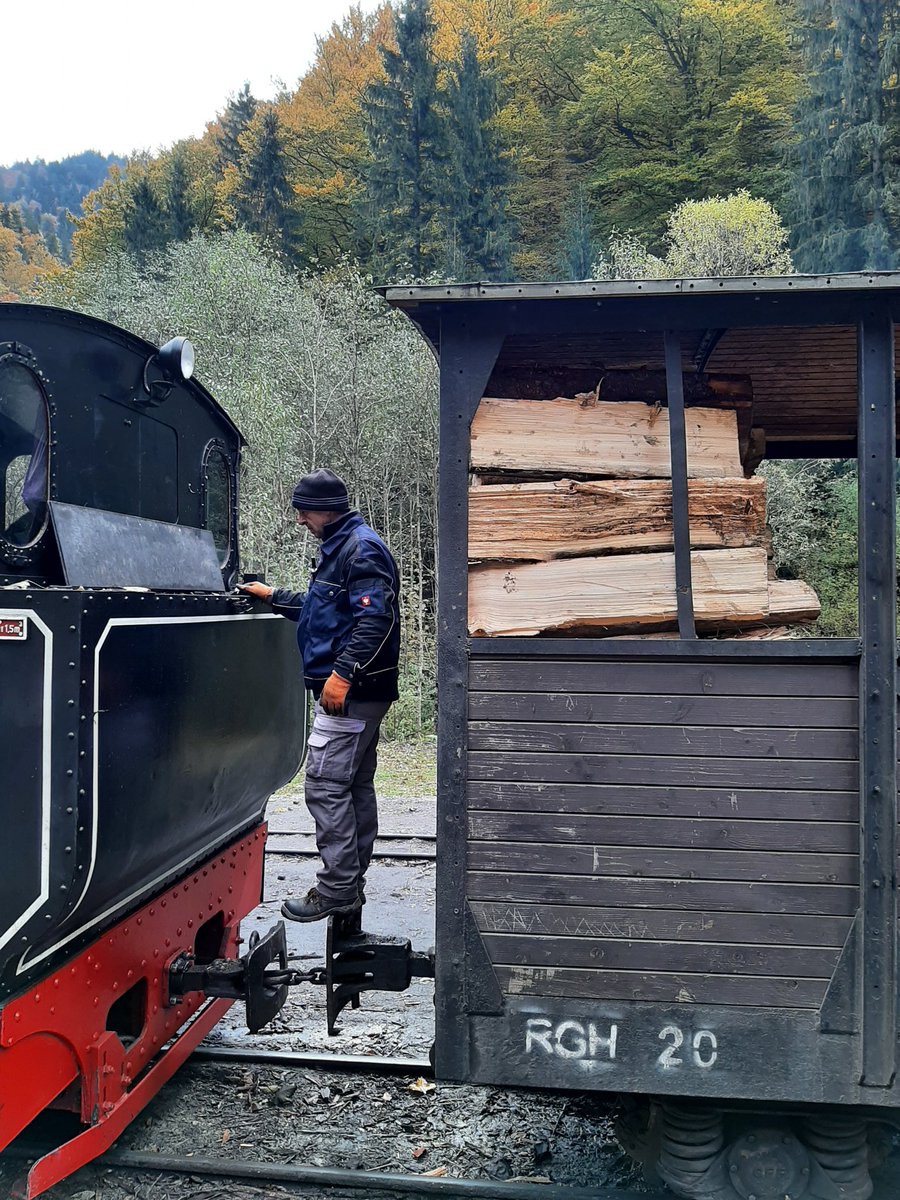
And we're off for the continuation of the ride. Make sure you are back in time on board when the whistle sounds for departure! A German woman in our carriage was too late and missed the train, being lucky that she could hop on the 2nd train today which ran some 30 mins behind us.
Sound on to hear the rickety railway tracks and the loud whistling from the steam locomotive as the train follows the meandering river through the forested hills..
After two hours we reach our final destination in the middle of the forest. Although the line continues a bit further, all passengers must get out here (the empty train continues a bit further to some marshalling yard where the locomotive can reverse for the return journey). 







There are a few bungalows here from where you can buy drinks or food (grilled meat from the BBQ among others) and some tickets have the meals included. Passengers have 50 minutes to relax and enjoy the surroundings before the train arrives back for the return journey. 







The atmosphere at the stop is jovial, partly thanks to some music playing and local youth performing traditional dances.
After the 2nd and last train of the day has dropped off its passengers here and continued to the forest marshalling yard, our train returns to pick up its passengers for the 2-hour-long journey back to Vişeu de Sus. 




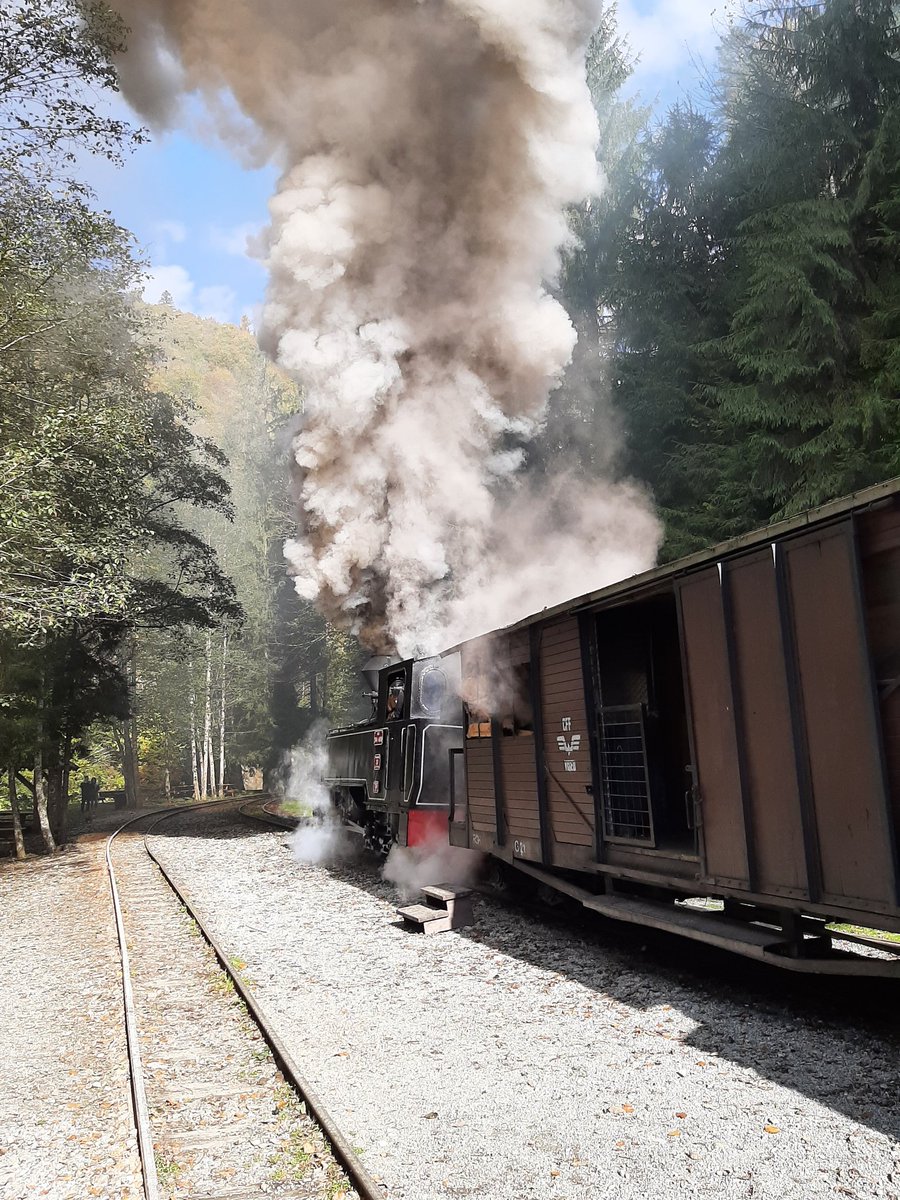


As the train is travelling back, the wagons are in reversed order - which means that my carriage is now the last one. Great news, as my wagon has an open-air platform at the back for some superb views back over the railway tracks! 







This is as perfect as train travel can get!
Needless to say, I spent the entire ride back standing on the rear platform. I've done this journey before once in summer - which is great too - but nothing compares to travelling here at peak autumn!
I say it again: Maramureş has some superb scenery which can easily rival with US national parks in beauty, with autumn foliage being as good as you can find in New England or other areas which are better known across the world for this. 







Arriving back at the Vişeu de Sus railway yards where the journey began..
At the Vişeu de Sus railway yards you can find a station building (ticket office) and café for the Mocaniţa passengers. You are also free to roam the yards before or after your train trip. 







At the railway yards you can also admire some steam locomotives and a couple of more unusual vehicles. Check the cute puppies in front of the loc! 







At the Vişeu de Sus railyard you can also find sleeper carriages + a @_DiningCar (ex-SBB) which were brought here by a lovely Swiss couple along with a few 100m of standard-gauge track to put them on. In summer it functions as a stationary hotel train! (Pics from an earlier trip) 




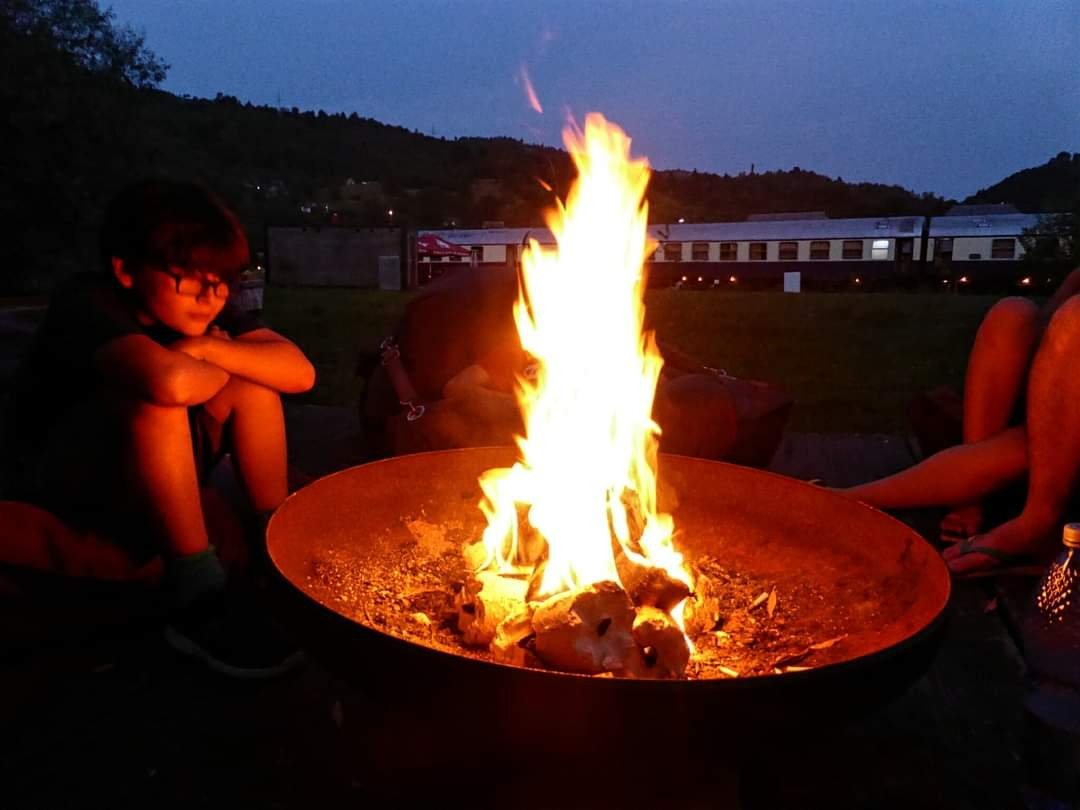


Small correction as @Vantju pointed out: The dining car is indeed Slovakian originally, although the couple running it are definitely Swiss. Can't remember their full story where they bought it as it has been years ago (and they spoke in Swiss dialect!)
https://twitter.com/Vantju/status/1450559188598411267
As I arrived back on the first train, I decided to quickly drive a few kilometres along the track by car to spot the 2nd train on its way back as it ran about half an hour behind us.. 







And there is the 2nd and last tourist train of the day!
Bonus video: this rather unusual service train driving just seconds behind the last tourist train of the day :) apologies if I spammed a bit too much steam train stuff today, but it's testimony to how much I enjoyed the ride and superb Maramureş scenery! Tomorrow it's back home..
• • •
Missing some Tweet in this thread? You can try to
force a refresh












